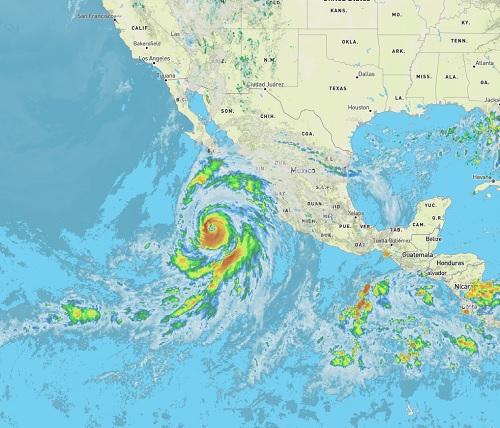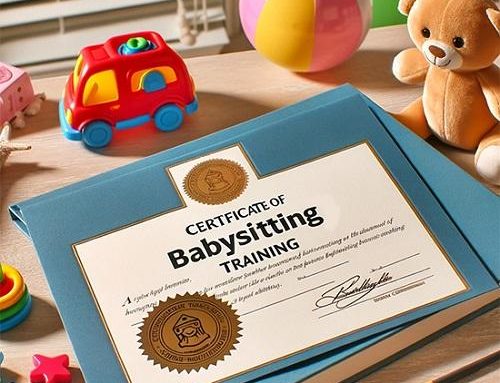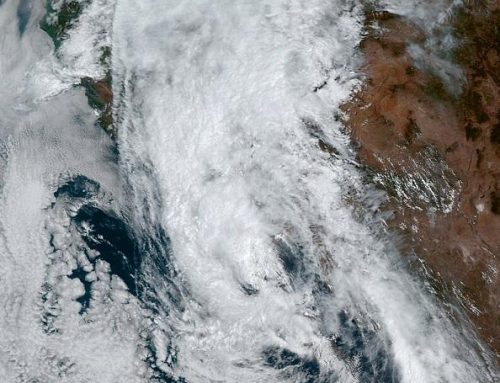Implications for Las Vegas Residents and Safety Precautions They Should Take
(Article Posted 8/18/2023, 1:45 PM, Pacific Time)
The formation of Hurricane Hilary in the Pacific Ocean has raised concerns for potential impacts on Las Vegas and Southern California residents. While the storm is expected to weaken as it moves north, heavy rainfall and flooding are still possible threats to the area. With Las Vegas experiencing only a handful of tropical storms in recorded history, it is crucial for residents to understand Hilary’s potential effects and take proper precautions.
Hurricane Hilary developed off the southwest coast of Mexico in late July 2023. Packing peak winds of 120 mph, the storm tracked northwest through the Pacific as a Category 3 hurricane. While cooler waters are expected to gradually weaken Hilary to a tropical storm, rainfall projections indicate 4-8 inches may fall on Las Vegas and surrounding areas. This rare amount of precipitation brings threats of flash flooding, rockslides, and debris flows. With Las Vegas’ limited storm drainage infrastructure, street flooding could cause road closures and disruptions. Gusty winds may also down trees and powerlines. While the storm may bring welcomed rainfall to the drought-stricken region, residents should prepare for hazardous conditions.
Las Vegas’ location in the Mojave Desert makes tropical cyclones an uncommon occurrence. Only nine named storms have passed within 150 miles of the city since record-keeping began in 1951. The most recent was Hurricane Nora in 1997, which dropped 2.47 inches of rain but caused little damage. For Southern California, only four Pacific hurricanes have made landfall since 1900. The last was an unnamed storm in 1939 that brought flooding to the Los Angeles area. While weaker tropical storms occasionally brush Southern California, Hurricane Hilary’s projected path is a relatively rare event. Preparing for associated hazards will reduce risks to Las Vegas residents unaccustomed to tropical weather.
With Hilary’s arrival anticipated within 48 hours, residents should take steps to protect themselves and property. Monitoring weather alerts and having emergency kits prepared are crucial precautions. Flashlights, batteries, cash, and first aid supplies help households endure power outages and other storm impacts. Signing up for regional alert systems provides real-time notifications if evacuations are necessary. Protecting documents in waterproof containers prevents loss of valuable items. Checking insurance policies ensures coverage of potential damage. Vehicle fuel tanks should be filled in case fuels shortages occur. Developing emergency plans with meeting places and communication plans keeps families informed if separated. Securing loose outdoor furnishings and objects reduces flying debris. Turning refrigerator temperatures colder preserves food if power is lost. Preparations made ahead of time reduces panic when the storm arrives.
Remaining indoors in a secure structure is the safest practice during Hurricane Hilary’s passage. Flooding may cut off roadways and wash out bridges hours before the storm’s peak. Traveling during heavy rain risks driving into flooded areas and damaged roads. If ordered to evacuate, following marked routes out of flood zones prevents being trapped. Staying away from windows protects against flying glass and debris. Electrical equipment should be unplugged to avert shocks from lightning and downed lines. Gas and water valves should be shut off to minimize leaks if lines are ruptured. After the storm, caution must be taken to avoid floodwaters which may conceal debris, chemicals, and electrically charged downlines. Waiting for officials to inspect areas before reentry is wise. Remaining patient as crews clear roads and restore utilities speeds recovery.
While heavy rainfall may alleviate drought conditions, it brings risks of flooding to Lake Mead’s reservoirs. With Lake Mead standing at just 27% capacity in 2022, excessive runoff could overfill upstream reservoirs. Spillway discharges may become necessary at Lake Powell, increasing downstream flows beyond Lake Mead’s capacity. Increased discharges from the Hoover and Davis Dams may be required to control the lake’s rising waters. Flash flooding is possible in canyons and washes around the reservoir as well. The National Park Service and Bureau of Reclamation closely monitor conditions and take precautions to prevent infrastructure damage. Though the rain is welcomed, containing the flows presents unique challenges.
In Hilary’s aftermath, response and recovery resources will be available to assist residents with storm impacts. Sandbags can be obtained to divert water away from structures if flooding occurs. Safety inspectors check electrical, gas and water lines for damage. Road crews clear debris from streets and drainages. Gasoline, food, and aid distribution sites may open if supplies run short. The Red Cross provides emergency shelter for displaced households. Calling 911 should only be reserved for serious injuries and life-threatening situations. Non-emergency assistance can be requested through information hotlines. Patience is urged when awaiting restoration of infrastructure services. Cautious and attentive driving is advised with debris, water and mud potentially on roadways. Following recommendations from emergency managers facilitates recovery.
Hurricane Hilary marks a rare tropical weather event for the Las Vegas region. While the storm may bring beneficial rainfall, residents should understand potential impacts and prepare accordingly. Staying informed, securing property, stocking supplies, and monitoring flood-prone areas are key to safely enduring the storm’s effects. Following evacuation routes and being cautious in the aftermath limits risks. Though Las Vegas does not frequently experience such events, preparing as recommended greatly improves public safety. With advanced planning and proper precautions, the city can emerge from Hilary ready to rebuild and recover.
Preparing for the Storm: A Safety and Emergency Planning Guide for Las Vegas Businesses
Las Vegas, known for its bustling nightlife and thriving tourism industry, can occasionally be threatened by extreme weather events such as hurricanes and severe storms. The risks associated with these events make it imperative for businesses in the area to have well-thought-out emergency plans. This guide aims to assist Las Vegas businesses in understanding and implementing effective strategies to ensure the safety of their employees, property, and operations during these challenging times.
Understanding the Risks
While hurricanes are relatively rare in the Las Vegas area, they are not entirely impossible, and the accompanying storms can bring heavy rain, strong winds, and flash flooding. This can lead to significant damage to property, disruption of operations, and even the risk to human life.
General Preparedness
It’s vital that businesses are proactive rather than reactive. Some general preparedness steps include:
- Assessment of Vulnerabilities: Identify potential weak points in your building or operations that might be affected by a storm.
- Insurance Coverage: Ensure you have appropriate insurance to cover any potential damages.
- Emergency Contacts: Keep a list of emergency contact numbers, including local authorities and utility companies.
Actions for Businesses in the Las Vegas Area
- Establishing Emergency Communication Plans
- Employee Communication: Develop clear strategies to inform staff of closures, evacuations, and safety directives.
- Coordination with Suppliers: Regular dialogue with suppliers and shipping companies will help minimize disruptions.
- Securing Property and Assets
- Physical Assets: Secure outdoor furniture, signage, and equipment to prevent wind damage.
- Electronic Protection: Implement measures to protect sensitive electronics from surges and lightning strikes.
- Data Backup: Regularly back up essential data offsite.
- Employee Safety Measures
- Avoid Unnecessary Travel: Instruct employees to avoid non-essential travel during hazardous conditions.
- Paid Leave for Non-Essential Personnel: Consider providing paid leave for those who are not required at the workplace.
- Duty Rearrangement: Adjust staff duties as necessary to maintain essential functions.
- Personnel Tracking: Managers must account for all personnel and ensure their safety when the storm passes.
Additional Advice for Businesses
Beyond the general preparedness measures and specific actions for Las Vegas businesses, there are some additional considerations that can further enhance safety and resilience. These additional pieces of advice encompass training, resource management, collaboration with authorities, and recovery planning.
- Training and Drills
- Regular Training: Make sure to conduct regular training sessions with employees to ensure they understand their roles and responsibilities during a storm.
- Familiarity with emergency procedures reduces panic and increases efficiency during an actual event.
- Practice Drills: Hold drills simulating emergency scenarios, allowing employees to practice what they’ve learned. This practical experience helps reinforce training and build confidence.
- Review and Update: Continually review and update the training materials to reflect changes in best practices, local regulations, and the unique needs of your business.
- Resource Inventory
- Essential Supplies: Maintain an inventory of essential resources such as water, food, flashlights, batteries, and first-aid supplies. Having these necessities on hand can be vital during prolonged power outages or if employees must shelter at the workplace.
- Regular Checks: Periodically check and refresh these supplies to ensure that they are always ready for use.
- Collaboration with Local Authorities
- Local Alignment: Work closely with local emergency management agencies to understand the specific risks in your area and align your plans with community-wide emergency planning.
- Community Engagement: Participate in community preparedness initiatives and share insights and resources with other businesses and organizations. Collaboration strengthens community resilience.
- Recovery Plans
- Assessment and Reporting: Outline procedures for assessing damage after a storm, including reporting to insurance and necessary authorities.
- Return to Normal Operations: Develop a roadmap to resume normal operations as quickly as possible. Consider contingencies for prolonged disruptions.
- Employee Support: Include plans for supporting employees in the aftermath of a storm. This may include counseling, temporary housing assistance, or other support mechanisms tailored to the needs of your staff.
By embracing these additional considerations, businesses in Las Vegas can ensure a more robust and comprehensive approach to handling severe weather events. From regular training and resource management to close collaboration with local authorities and thoughtful recovery planning, these strategies provide further layers of protection and preparedness. Such proactive measures not only safeguard property and lives but also contribute to the faster recovery and continued economic vitality of the Las Vegas area.
Conclusion of the Safety and Emergency Planning Guide for Las Vegas Businesses
By understanding the risks, planning ahead, and taking appropriate actions, Las Vegas businesses can mitigate the impacts of hurricanes and major storms. Advance preparation, assessment of vulnerabilities, and effective communication are key components of this approach. The lessons learned from Hurricane Hilary can serve as a guide to ensure a more rapid return to normalcy after a storm, safeguarding both the people and the economic vitality of Las Vegas.
Sources:
- Las Vegas Review-Journal: Hilary headed our way; Las Vegas rain could be heavy
- Red Cross: Hurricane Hilary Threatens Southern California — Get Ready Now
- NBC News: Hilary strengthens into Category 4 hurricane as California braces for potential flash floods
- Los Angeles Times: How to prepare for Hurricane Hilary, the first tropical storm to hit L.A. in 94 years
- FOX5 Vegas: Hurricane Hilary could bring heavy rain to Southern Nevada
- Los Angeles Times: Hurricane Hilary is bearing down on Southern California. What’s your flood risk?
- KRON4: Hurricane Hilary grows to Category 4 as it approaches California
- KFI AM 640: Storm Preparation Tips As Hurricane Hilary Approaches Southern California
- 8 News NOW: What Hurricane Hilary could mean for Lake Mead water levels
- FOX40: How can California residents prepare for Hurricane Hilary?
- WBAL-TV: Hurricane Hilary grows rapidly off Mexico
- The Weather Channel: Hurricane Hilary’s Remnants Are Las Vegas Flood Threat
- The Coast News: Hurricane Hilary: Local officials provide storm tips, sandbags










